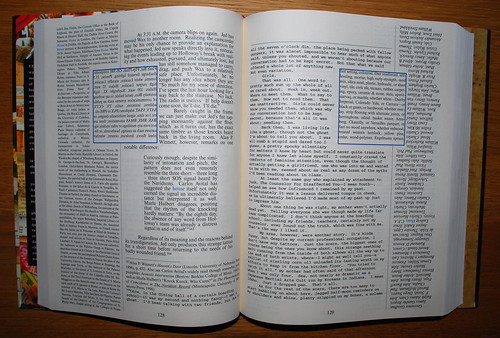The Ancient Greeks believed that artistic inspiration came from the gods, specifically the Muses: the nine goddesses of inspiration. Poets were stricken with poetic madness or insanity when they wrote. They were more conduit than author.
At that time, Greek thinkers also believed that the intellectual giants in philosophy, politics, and the arts were all afflicted by “melancholics” or melancholy. Science has since changed how people perceive writers and creativity, and doctors have provided insight about afflicted people who previous centuries would have labeled as “insane.”
The semantics have changed, but the question remains: Are writers more prone to addiction and mood disorders?
Mood disorders are a group of psychiatric diagnoses characterized by a disturbance of the person’s mood. They include clinical depression, bipolar disorders, seasonal depression, and substance induced mood disorders.
There are plenty of stories about writers that support this hypothesis. Many great writers have displayed similar struggles: addiction, depression, and other mood disorders. I call these tendencies the Hemingway-personality.
Ernest Hemingway was a brilliant novelist that changed the landscape of prose with his economic and deft writing. His famous works are “The Sun Also Rises” and “The Old Man and the Sea.” Hemingway was an alcoholic, and he shot himself in the head with his hunting shotgun during a period of depression. Experts believe he was bipolar. Hemingway is a representative example for addicted and depressed writers.
Someone with a Hemingway-personality is more likely to enter a creative occupation, such as writing. Some scientists and psychiatrist even argue that a writer with a Hemingway-personality has an advantage in creative efforts.
Not all writers have a Hemingway-personality, of course. Writing doesn’t increase your chances of depression. I’m not suggesting that you have to suffer to make great art. However, many writers have suffered mental illness and destructive addictions.
As I write this, I’m faced by a blunt truth. I am a writer. So … do I have a Hemingway-personality?
The bestseller author Stephen King was an alcoholic and drug addict before he quit mid-life. In his book “On Writing,” he said he doesn’t remember writing one of his books because of all the drugs and alcohol. (You must read “On Writing” if you’re a writer. It’s great fun.)
“Creative people probably do run a greater risk of alcoholism and addiction than those in some other jobs, but so what?” King said. “We all look pretty much the same when we’re puking in the gutter.”
I attended a Baptist college in a dry town so I didn’t drink alcohol during college. But we had caffeine in abundance. The gas station across the street sold rows and rows of caffeinated soda and energy drinks. Liquid energy. I called it “my rocket fuel.”
Hunter S. Thompson was a novelist and journalist that wrote “The Rum Diary” and “Fear and Loathing in Las Vegas,” both of which became movies starring Johnny Depp. Thompson was well-known for his use of illegal drugs and alcohol. He was, in other words, a Hemingway-personality.
Thompson collected guns. After years of painful health conditions, he used one of his guns to shoot himself in the head, a Smith & Wesson Model 645 semi-automatic pistol.
Wikipedia has a page called “Writers who committed suicide.” It’s a grim list for an aspiring writer. Suicide and depression are intimately linked: most writers on that list killed themselves because of depression.
Virginia Woolf, 1941. Ernest Hemingway, 1961. Sylvia Plath, 1963. Hunter S. Thompson, 2005. David Foster Wallace, 2008. They all committed suicide.
Scientists have done limited research on the connection between creativity and mood disorders. But enough to know a relationship exists.
“It seems likely that creative individuals do have higher rates of mood disorder in general, and bipolar disorder in particular,” Dr. Nancy C. Andreasen said. She is a scientist and neuropsychiatrist that specializes in mental illness.
Some scientists and psychiatrists even argue that a writer with a Hemingway-personality has an advantage in creative efforts.
“Clinicians who treat creative individuals with mood disorders must also confront a variety of challenges, including the fear that treatment may diminish creativity …,” Dr. Andreasen said.
Some writers believe that treatment for their mood disorder would sever their link to the Muses. They’re afraid of losing their power. But research suggests that treatment can actually increase the productivity of writers who have mood disorders.
Creativity isn’t directly liked to mood disorders: it isn’t a symptom of mental illness.
This discussion raises an interesting question: In the future, should we remove genes that can cause mood disorders? Will that reduce the number of artists in the future? Would it be worth the sacrifice?








